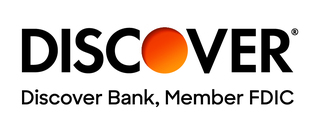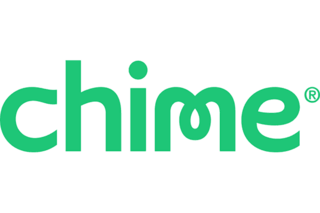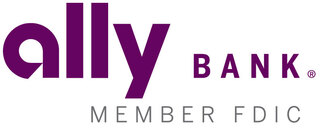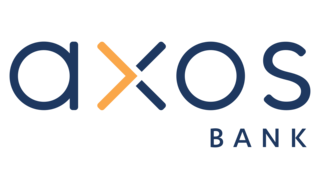Best Joint Checking Accounts
*Rates and APYs are subject to change. All information provided here is accurate as of May 19, 2023.
A joint checking account is an easy way for two people to share their finances. These accounts are safe, simple to use and accessible. Some joint accounts are ideal for couples saving for their future, while others are great for parents and teens.
This review will walk you through some of the best checking accounts for joint banking. We also include a guide on how to open a joint bank account, including pros, cons and features to consider.
Our Top Picks for the Best Joint Checking Accounts
The companies listed below are in alphabetical order.
- Alliant — Best Credit Union Account
- Ally Bank — Best for Mobile Access
- Axos Bank — Best APY
- Capital One — Best for Parent-and-Child Banking
- LendingClub Banking — Best for ATM Reimbursement
- SoFi — Best Combination Account
The 6 Best Joint Checking Accounts Reviews
Below are the pros, cons and highlights of six popular joint bank accounts. Whether you’re looking for a high APY or the best online checking accounts, the right bank will help you and your banking partner stay on top of your finances.
Why we chose it: Alliant is a reliable joint checking account for people who prefer banking with a credit union. This account offers 0.25% APY and a user-friendly mobile app.
- Minimal requirements to earn interest
- Responsive customer service
- Instant fraud alerts
- Some membership requirements to open an account
- No in-person account
- APY
- 0.25%
- Minimum opening deposit
- $25
- Monthly fee
- $0
Alliant combines the personalized service of a credit union with the convenience of an online bank. Although it’s small, this credit union offers helpful customer service and a decent APY for a checking account.
The biggest drawback of Alliant is that it isn’t available to everyone. Alliant members must be either:
- A relative of an existing Alliant member
- A member of a partner organization
- A member or employee of a partner charity
- An employee or resident of a qualified community
If you meet one of the above requirements, you can open an Alliant account and add one other person as a joint account holder. Your Alliant joint checking account qualifies for 0.25% APY if you receive e-statements and make at least one electronic deposit each month. There are no monthly maintenance fees or overdraft fees, and Alliant offers ATM reimbursements of up to $20 per month.
Alliant’s customer service department is well-staffed and responsive. You can call the 24/7 helpline, access live chat through your banking app or get a quick response on Twitter. Customer reviews report a positive experience with Alliant’s joint checking account, but the credit union’s investment accounts receive a high number of complaints.
If you or your partner meet the eligibility requirements, Alliant is a safe choice for a joint checking account. Based on its reviews, you might not want to use Alliant for your long-term investments.
Why we chose it: Ally’s joint bank account is easy to open and manage through its intuitive mobile app. This online account is ideal for a busy, tech-savvy couple.
- User-friendly website and app
- No monthly fees
- No cash deposits
- Low-interest account
- APY
- 0.10% on balances below $15,000, 0.25% on balance above $15,000
- Minimum deposit requirements
- $0
- Monthly fee
- $0
Ally is an online-only bank and financial service that offers a wide range of accounts. Its Interest Checking account has no fees and is easily managed by two people. Although it isn’t the best for high-yield savings, Ally Bank is a good choice for simple, low-cost banking.
As an online bank, Ally has no branch locations. That means you can’t deposit cash into your account, which might be difficult for food service employees and other professionals who work with cash. But you can withdraw cash from your account at any standard ATM, with reimbursement for out-of-network fees up to $10 per month. Ally also has a 24/7 customer helpline and online live chat to replace in-person representatives.
The key benefit of an Ally joint bank account is its mobile app. Ally’s Banking and Investing app is well-rated on Google Play and the Apple app store. It lets you monitor your account, send and receive money, deposit checks on the go and contact customer service. Ally’s website is also user-friendly and easy to navigate.
Ally Bank charges no monthly fee for its joint account. It also has no overdraft fees. If you want an affordable online bank account, Ally is a good option. But its low interest rates and lack of branch locations mean it might not be right for everyone.
Why we chose it: Axos Bank Rewards Checking is a joint checking account that pays higher-than-average interest rates. With up to 3.30% APY, this account is best if you want to make the most out of your money.
- High APY for a checking account
- Unlimited ATM fee reimbursements
- Helpful mobile tools
- Highest APYs have strict requirements
- No free checks provided
- APY
- Up to 3.30%
- Monthly balance requirements
- $0
- Monthly fee
- $0
Axos Bank offers a Rewards Checking account for two people who want to maximize their balances together. This is a fully online account that comes with mobile tools to monitor your finances. You can link your checking, savings and investment accounts with Axos to keep track of everything in one place.
The greatest advantage of Axos is its high APY. Account holders can earn up to 3.30% APY if they follow the right steps. For example, receiving direct deposit earns 0.4% APY. Using your Axos debit card at least 10 times per month earns another 0.3%. Two account holders can meet the requirements together, not separately (i.e., using their debit cards five times each month). Adding loan payments and investment accounts kick it up another 2.60%.
Axos Bank Rewards Checking has no monthly maintenance fees and no overdraft fees. It also offers unlimited ATM fee reimbursements, which are paid out at the end of each month. Checking accounts with more than $50,000 will not earn interest, so it’s worthwhile to open an Axos savings account as well.
Axos doesn’t provide free checks. Another drawback is that its customer service gets below-average reviews on sites like Trustpilot. Axos does have a 24/7 helpline and live chat support, but several customer complaints report a slow response time and unclear communication from its representatives.
This account is best for a couple that wants a high APY and helpful mobile tools. But remember, there are specific conditions you have to meet for the highest APYs. Also, it isn’t the right account if you’re looking for in-person service.
Why we chose it: Capital One’s MONEY Teen Checking account comes with a kid-friendly debit card and mobile tools. This is a secure, simple account for kids and teens to learn how to manage their money.
- No minimum deposit amount
- Parental controls
- Kid-friendly mobile tools
- Low spending limit for teens
- No checks available
- APY
- 0.10%
- Minimum deposit requirements
- $0
- Monthly fee
- $0
The MONEY Teen Checking account is available to children over the age of eight. This is a joint checking account designed for a parent and child. It has no monthly fees and up to 0.1% APY — which is standard for an adult checking account but above average for a teen account.
Capital One’s kid-friendly debit card functions like a normal card but has parental controls to lock the account and monitor spending. It also has a daily spending limit of $500. While that limit may be helpful for some parents, it could be a disadvantage for older teens who want to make a large purchase. Teens can’t write checks from this account, but they can deposit them with the mobile app.
The Teen Checking account has a mobile app with simplified money management tools. Kids can easily track their spending and savings. Parents can link an external account — it doesn’t have to be a Capital One account — to deposit an allowance. There are zero fees to open or use this account, but there is a small charge for using out-of-network ATMs.
Capital One is a traditional bank with brick-and-mortar locations. It also offers support online and over the phone. Some online customer complaints report difficulties with the 24/7 helpline, so you might get better service by going to your local branch.
Why we chose it: LendingClub Banking offers unlimited ATM surcharge reimbursements for any ATM, even internationally. This is a good joint checking account for a couple who travels regularly and wants to spend cash overseas.
- Unlimited ATM reimbursements
- Up to 1% cash back on qualified purchases
- First set of checks free
- High balance required for cash back
- APY
- 0.00% APY on balances between $0.00 and $2,499.99 | 0.10% APY on balances between $2,500.00 and $99,999.99 | 0.15% APY on balances of $100,000.00 and greater
- Minimum deposit requirements
- $25
- Monthly fee
- $0
LendingClub Banking, formerly known as Radius Bank, is an online bank that offers a cash-back debit account with unlimited ATM fee reimbursements. This account doesn’t collect much interest but might be worth it if you make regular ATM withdrawals.
To earn cash back with your LendingClub account, you must maintain a balance of $2,500 to $100,000 or deposit at least $2,500 through direct deposit each month. If your account meets those requirements, you can earn up to 1% cash back on qualifying purchases. Another key benefit of this account is the reimbursements. LendingClub reimburses all ATM surcharges for ATM fees charged by other banks and ATM owners, even for out-of-network and international ATMs.
Because it’s a relatively new bank, LendingClub’s customer reviews are limited. Most customer complaints refer to LendingClub’s loan and investment services, although a few report difficulties with the bank’s website. The mobile app has positive reviews for Android and Apple devices. You can contact customer service through the app or by calling the customer helpline during business hours.
Why we chose it: SoFi Checking and Savings is a unique combination account that can earn up to 4.00% APY. This is not a standalone checking account, but it could be a good option for couples who want to combine every aspect of their finances.
- Early direct deposit available
- Up to 15% cash back on some purchases
- Large ATM network with no fees
- No standalone checking account
- High fees for cash deposits
- APY
- Up to 4.00%
- Minimum deposit requirements
- $0
- Monthly fee
- $0
SoFi is an online-only bank that stands out for its combined checking and savings account. It has the potential to earn a high APY but might not be the best option if you already have a savings account.
SoFi Checking and Savings keeps two separate balances in one account. Your checking balance can earn up to 1.20% APY and your savings balance can earn up to 4.00% APY. To earn the highest possible APY, you’ll have to set up direct deposit. SoFi can expedite deposits up to two days before the usual date, so this account is definitely best for someone who gets paid through direct deposit. If you do not set up direct deposit, you will earn 1.20% APY on both accounts. It also offers up to 15% cash back on limited local purchases.
There are no monthly maintenance fees for this account. Account holders who maintain a minimum balance of $1,000 get no-fee overdraft protection to prevent overspending. There is a charge for using out-of-network ATMS, but SoFi has a larger ATM network than other online-only banks with over 55,000 locations. Cash deposits must be handled through a third-party retailer and can cost up to $4.95 per deposit.
Customer reviews report helpful phone service and live chat. However, live chat support is only available to existing customers, so you can’t use it to learn more about the account.
You might not want to open a SoFi Checking and Savings account if you already have a secure savings account. This joint bank account is best for couples who can take advantage of the direct deposit benefits and want to earn a high APY on their combined funds.
Other joint checking accounts we considered
The six financial institutions reviewed above offer well-rated joint checking accounts. They each have their benefits, but they aren’t the only options out there. Here are a few more joint checking accounts we considered and why they didn’t make our list.
Citi
Citibank offers a joint checking account with occasional bonus offers. While its bonuses are appealing, Citi has limited branch availability and lower interest rates than other brick-and-mortar banks.
- Up to $1,000 bonus for accounts with high opening deposits
- Wide range of products
- Less than 600 branch locations nationwide
- Low-interest accounts
TIAA Bank
TIAA Bank Yield Pledge Checking is a popular joint checking account. It has a helpful mobile app and some in-person locations but requires a high opening deposit and a minimum balance to get the most benefits.
- Higher-than average-APY (0.25%)
- Purchase protections included with debit card
- Requires a minimum deposit of $100
- $5,000 minimum balance requirement for ATM fee reimbursement
Wells Fargo
Wells Fargo’s joint checking account is best for people who prefer in-person banking. This account has some monthly fees and a low interest rate but offers the benefits of a large bank like a wide range of products and plenty of branch locations.
- Best for in-person banking
- Multiple checking account options
- Low APY (0%-0.01%
- Monthly fees apply for some accounts
Joint Checking Accounts Guide
Not all checking accounts are created equal. While some people prefer the stability and in-person service of a traditional bank, others might want the high-yield potential of an online bank or credit union.
The best banks for joint checking accounts offer mobile tools, low — or no — fees and multiple opportunities to save. Picking the right account for you comes down to your priorities. This guide will cover some of the most important things you need to know about joint checking accounts, including how to open an account and why you might want one.
What is a joint checking account?
A joint checking account is a bank account owned and managed by two people. These shared accounts are mostly used by couples but can also be helpful for parents and teens.
Online joint checking accounts have no physical location but allow both account holders to make payments and track their spending on the internet. These types of accounts are usually offered by online-only banks and have a higher APY than traditional accounts. However, they lack the convenience of in-person banking.
Traditional banks also offer joint checking accounts. Depending on the bank, you might be able to open a joint bank account online or by visiting your local branch.
How do joint checking accounts work?
Joint checking accounts work just like standard checking accounts. The only difference is that there are two account holders. Both account holders have a debit card connected to the account. They can spend, make deposits and transfer money to other accounts equally.
The primary account holder in a joint bank account has the ability to close the account or lock a debit card. Kids who open joint checking accounts with parents can’t be the primary account holder. However, not all banks require one person to be the primary member. When you open a joint bank account together, you and your partner can have equal control.
Opening a joint bank account is typically easy and fast. Some banks may have requirements to open an account, including:
- A membership (for a credit union)
- A minimum opening deposit
- An in-person meeting
- An existing account with that bank
If you already have a checking account you’re happy with, you might be able to add your partner or child as a second account holder. Talk to a customer service representative at your bank to find out if you can add a second member to your account.
The pros of joint checking accounts
There are a lot of benefits to opening a joint bank account. While it might not be the best choice for every couple, sharing an account can make it easy to keep track of your spending and reach your financial goals together.
Increased trust
Joint checking accounts for unmarried couples can be a major step in their relationship. Sharing your spending is great for improving trust and learning how to save together.
This also applies to parents and teens. A joint checking account can help to build trust in a parent-child relationship. While the teen enjoys earning and spending their own money, the parent can monitor the account and make sure they’re spending responsibly. Some joint accounts let parents send an allowance through direct deposit, so the teen can learn to balance a budget.
Easier bill paying
If you share your rent, mortgage or other bills with your partner, a joint checking account can make it easier. Both partners will have access to their shared checking balance. You can see when a bill is paid or take care of it without worrying about whose account the payment comes from.
Equal access to funds
A joint bank account for couples gives both partners equal access to their shared funds. This can take the stress out of day-to-day expenses like groceries and meals out.
A shared account is also a helpful tool for a stay-at-home parent who doesn’t have an independent income source. With the household income in one place, everyone has access to the funds they need.
The cons of joint checking accounts
While joint checking accounts are helpful for a lot of couples, they aren’t always necessary. There are some downsides to banking together, including a lack of privacy and limited spending channels.
Less control over how money moves
When you share a bank account with your partner, all your funds are channeled in and out of that account. Some people like the simplicity of that system. However, there might be benefits to moving your money through different channels.
For example, some online bank accounts offer cash back for spending. You might want to maximize your cash-back offers with separate accounts. If you choose a joint checking account, separate credit accounts can offer more ways to move money.
Zero privacy
Shared bank accounts offer very little privacy when it comes to your spending. Both partners will see every transaction on the account. Some couples prefer the independence of separate accounts, especially if they have sufficient incomes.
Garnishments and bank levies
Garnishments and bank levies can occur when you are in debt to a creditor. If one partner is in debt, the creditor can levy funds from the shared account.
Severe debt can also lead to the account being frozen. That means a full halt on shared bills, autopayments, direct deposits and ATM withdrawals. If one account holder is in debt, it’s best to have another source of funds like a savings account in case of garnishments.
Best Joint Checking Accounts FAQ
What is the FDIC limit on joint accounts?
Are joint banking accounts a good idea?
What happens to a joint account after one of the holders dies?
How We Chose the Best Joint Checking Accounts
We evaluated the six joint checking accounts in this article by comparing them with other popular options. They each have unique benefits and drawbacks but stand out in a few crucial categories.
Transaction and maintenance fees
The best joint checking accounts are entirely free or very low cost. The accounts reviewed on this list all have zero monthly maintenance fees. However, some have minor fees for out-of-network ATM withdrawals or cash deposits.
Branch and ATM availability
A lot of the accounts reviewed in this article are online banks, so they have no branch locations. We looked for banks that have a broad ATM network to help customers avoid ATM fees.
Customer service
The joint checking accounts we reviewed have multiple customer service channels. Most have a 24/7 helpline and live chat services.
Mobile banking experience
Mobile banking is the norm today, even for brick-and-mortar banks. All the accounts reviewed in this article come with an easy-to-use mobile app, though some apps get higher reviews than others.
Summary of the Best Joint Checking Accounts
The companies listed below are in alphabetical order.
- Alliant — Best Credit Union Account
- Ally Bank — Best for Mobile Access
- Axos Bank — Best APY
- Capital One — Best for Parent-and-Child Banking
- LendingClub Banking — Best for ATM Reimbursement
- SoFi — Best Combination Account












